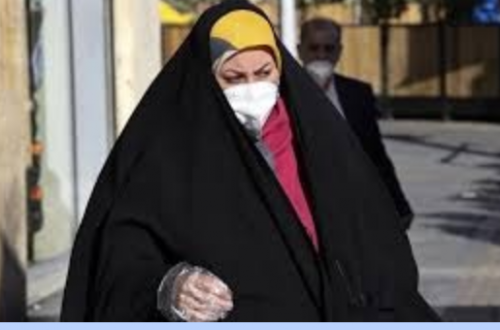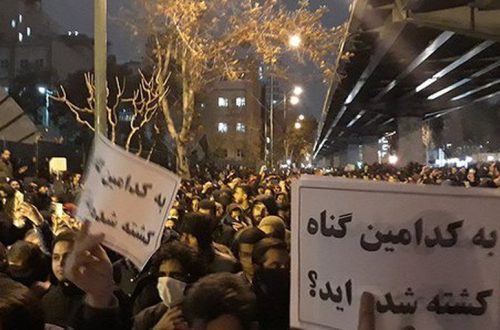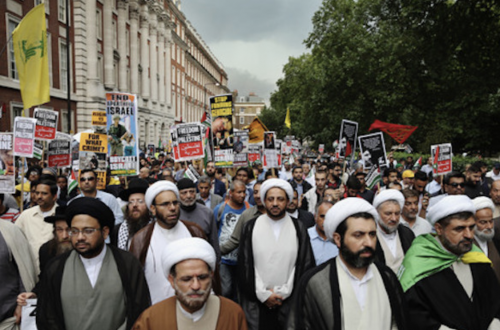(This is a guest post by Frank)
The international community should take seriously revelations this week in the Kuwaiti media that Iran has set up a secret workshop at the Zargan power station in Ahwaz City as part of its nuclear programme.
Kuwait’s Al-Siyasah newspaper reported on Tuesday that the Iranian authorities have been covertly working for years at the Zargan site, where the regime is constructing a secret nuclear reactor and is preparing for assembling a nuclear bomb.
Between 2000 and 2003, local residents in this predominantly Arab district complained of being forcibly removed from their homes to make way for the expansion of the Zargan power plant. The facility is now hidden behind three metre-high walls and, unusually for a supposedly civilian installation, is guarded by the Iranian Revolutionary Guards Corps (IRGC). Water for the nuclear facility is being piped from the Karoon River, which flows through the city. By locating the power plant in a civilian area, the regime has effectively turned the local Arab population into a human shield, making it impossible for a military strike without heavy human casualties.
The revelations are accompanied by a top secret letter, leaked via Kuwait-based Ahwazi Arab dissident groups, from Colonel Hasan Jalalyan, IRGC deputy commander in Ahwaz City, dated 7 April 2008. Addressed to supervising director for construction and supervision at the state-owned Mahab Qods Company, Mohammad Kayafir Jalalyan, the letter insists that the development of the nuclear plant be kept secret and that, for security purposes, no local Arabs should be employed at the site, with personnel to be brought in from northern provinces. The assumption is that the local Arab population is more disloyal to the regime than those living closer to Tehran.
Unsurprisingly, the Iranians insist the plant is for civilian use and that the revelations are part of a “psychological warfare waged by the enemies against Iran, in order to achieve their vile targets.” Al-Seyassah claimed that the Iranian response was a “false denial” and that there would be a fuller disclosure in coming days that will further substantiate the evidence of a secret nuclear facility.
The power plant site is anything but civilian. It is owned by the Saba Power and Electricity Industries Company (http://sabapei.com/), a subsidiary of the Bonyad Mostazafan (Foundation of the Oppressed). This is Iran’s largest bonyad, a massive quasi-governmental enterprise set up and run by the religious establishment that encompasses significant and strategic areas of the Iranian economy. It is not an innocent front for the oppressed, but recognised as part of the Iranian military infrastructure by European governments. Although not directly subject to sanctions, several European governments have warned exporters that the bonyad is procuring goods and technology for WMD programmes, including the acquisition of nuclear and chemical weapons.
Through the Bonyad Mostazafan, Saba is intimately bound up with the interests of the IRGC, the organisation that is overseeing the nuclear programme. The German government warned back in 1996 that the bonyad “buys equipment for the Iranian nuclear weapon, chemical/biological weapon and missile programs.”
An example of the trade in products that can be used in the acquisition of nuclear technology is beryllium. This substance has many practical civilian applications, for example beryllium copper, which contains 2.5% beryllium and is used in electrical circuits. In high concentrations, it is used in the construction of nuclear weapons as a neutron reflector, which reduces the amount of uranium needed for detonation, and a neutron initiator, which detonates the bomb. The IRGC has imported large quantities of civilian-use materials containing low concentrations of beryllium and has charged engineers with responsibility for the refining of the metal to sufficiently high concentrations. Despite warnings from senior engineers of the toxicity of the substance, IRGC commanders removed many health and safety procedures that protect technicians in the beryllium workshops. This was done to speed up the refining process, indicating the haste with which the Iranian regime is attempting to construct a nuclear bomb. As a result, most technicians in the beryllium workshops at the Darkhovin reactor site have developed malignant tumours and contracted lung disease from inhaling beryllium dust.
The Bonyad Mostazafan’s subsidiaries are acquiring dual use technology to supply the secret facilities at the Zargan site, which have been operating outside of the IAEA inspection process. The supply chain for the most sensitive areas of Iran’s nuclear programme goes all the way to Europe via a number of IRGC subsidiaries and European trading and brokerage companies. Acquisition of material and technology is being co-ordinated by Iran’s ambassador to Finland, Reza Nazarahari, who has been instrumental in Iran’s efforts to re-equip and reorganise Iraq’s Badr Brigades militias, working closely Haji Bashir, the Finland representative of the Supreme Islamic Iraqi Council.
Finland is a European backwater with an inadequate security infrastructure, which is an ideal environment for the Iranian regime to conduct illicit activities without being watched by the prying eyes of Western intelligence services. As yet, the Finnish authorities have not warned local businesses of the possibilities that they could be engaged in sanctions-busting trade with seemingly legitimate Iranian businesses.
Iranians living in Helsinki claim the city is being inundated by Iranian intelligence officials who are being married off to local women – courtesy of some healthy remuneration from Nazarahari’s offices – in order to obtain EU citizenship. This enables them to set up European brokerage firms that can side-step US sanctions to purchase US-manufactured dual-use products for use in the Iranian nuclear programme. The shipments are then transferred to Dubai, which serves as the IRGC’s regional headquarters, and on to Iran. The trade bureau of Iran’s Dubai Consulate is, according to a former Iranian Consul General, under the direct control of the Iranian Ministry of Intelligence, not the Ministry of Foreign Affairs, and co-ordinates these illicit trading activities.
Western intelligence services have come to realise the importance of the Finnish link in illegal supplies to the Iranian nuclear programme. Their alerts to the Finnish authorities resulted in the last-minute cancellation of an Iran-Finland business conference organised by Finpro, Finland’s leading trade consultancy for small- and medium-sized firms, on 2 June. The 82 Iranian businesses that were attending the event were all associated with the Revolutionary Guards and the religious bonyads.
What should trouble the international community is the IAEA’s lack of urgency and thoroughness. IAEA Director General Mohamed ElBaradei has taken on extra-curricular responsibility to use his offices to avert conflict between the US and Iran. However, by seeking to protect Iran, ElBaradei may ultimately be creating the conditions for a wider and bloodier conflagration.
There is ample evidence that Tehran is side-stepping the IAEA’s inspections process and breaking trade sanctions on dual-use technology. There is also reason to believe the regime is recklessly accelerating the nuclear programme, putting the lives of its own civilians in danger. If Iran gains a nuclear warhead within the next decade – which is highly likely according to insiders at Darkhovin – Tehran will be able to secure its imperial ambitions in the Middle East. Gripped by fear of an emboldened and belligerent Iran, the response from Saudi Arabia and Israel will be a conventional and unconvential arms race, which will be hard if not impossiblef to reverse. Deputy Prime Minister Shaul Mofaz told the Institute for Near East Policy in Washington that a nuclear-armed Iran is “an existential threat.” The former army commander added: “We don’t want war; we want peace, but we will not let the second Holocaust take place …”
For those with an interest in peace and security in the Middle East and averting a war, the only option to close down the nuclear programme, at the very least through a rapid progression of sanctions against the religious establishment and the IRGC and those that do business with them. The true peace faction is those who want to confront Iran before it is too late, not the IAEA ostriches and most definitely not those in the anti-war movement who regard the current regime in Tehran as a victim of imperial intimidation.


